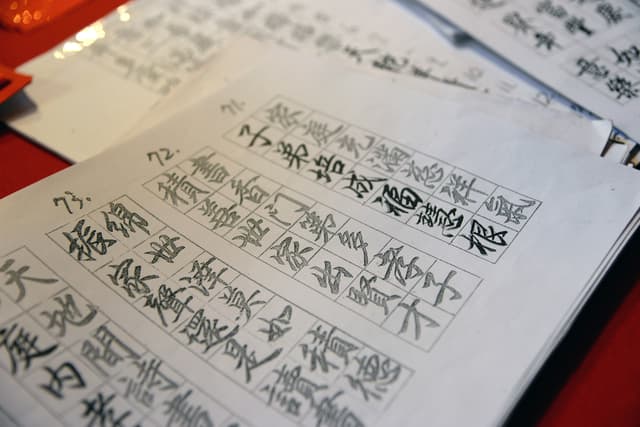Traditional Chinese
Qualities of Traditional Characters
- Steady and Long-standing
-
The emergence of the modern shape of traditional Chinese characters could be traced back to the Han Dynasty (202 BC-220 AD). In other words, the traditional Chinese characters have been passed down through generations. Though the primary script style that is officially used in Taiwan, Kai-ti, or the regular script, is a style in a modern shape that shows a little variant with that emerged two thousand years ago.
- An Easier to Comprehend and Learn Structure
-
“Shouwen Jiezi” is the first comprehensive Chinese character dictionary by Xu Shen from the Han Dynasty that deconstructed and analyzed the structure of Chinese characters with the concept of Liu Shu, or six principles of Chinese character classification. From the aspect of Chinese character structuring system as summarized in the book, the composition, and structure of traditional Chinese character is easier to comprehend and learn. The statistics have shown that 90% of characters compiled in the book “Shouwen Jiezi” were phono-semantic compound characters, the rule of phonological, graphical and semantic connection of a character could be grasped easily if a radical (equivalent to the root of a word) is comprehended. [Note 1]
- With Artistic Beauty
-
The beauty of traditional characters is revealed in the art of Chinese calligraphy, not just for every stroke that demonstrates linear aestheticism, but also for the entire course of writing, which is an experience of a rhythmic flow of relaxation.
- Integrate Past and Present
-
If you have the interest to open up the vault of Chinese culture through classical works, then learning traditional characters is the key to this. Indeed, knowledge of the traditional Chinese characters is also an essential tool for everyone wishing to understand Taiwan produced TV programs, movies, or intend to tour, study, and work in Taiwan.
Similarities and Differences Between Traditional and Simplified Chinese

The traditional Chinese characters had gone through a long period of transformation. The form of characters we see nowadays first appeared with the emergence of a dominant style of script, Han-li (or clerical script), during the Western Han Dynasty (206 BC-8AD) two thousand years ago. On the contrary, simplified Chinese is a much younger written language, developed by policy promulgated in the early 20th century.
Though about two thousand characters were simplified, their structure and form did not show many variants in comparison to traditional Chinese. With the ever-developing writing implements, to present traditional and simplified Chinese characters takes only milliseconds of time differences.
[Note 1] Rick Harbaugh(1998):《中文字譜:A Genealogy and Dictionary》Han Lu Book & Publishing Company.